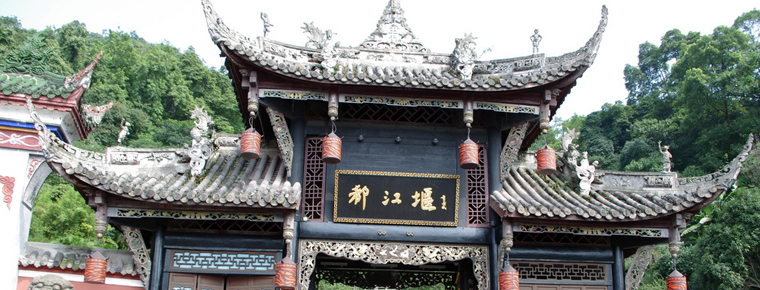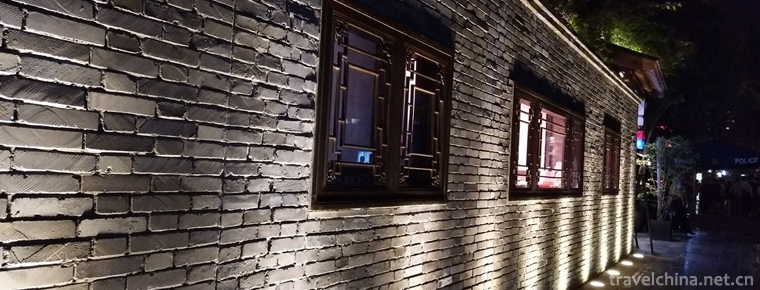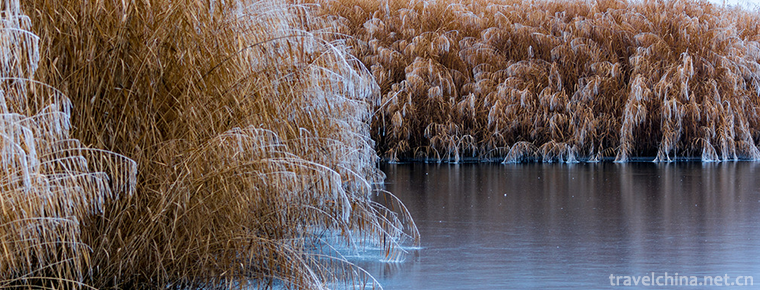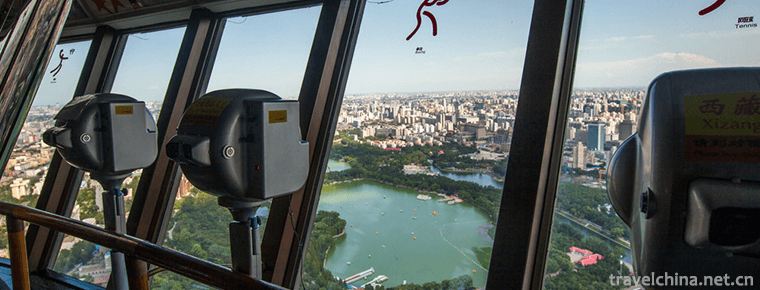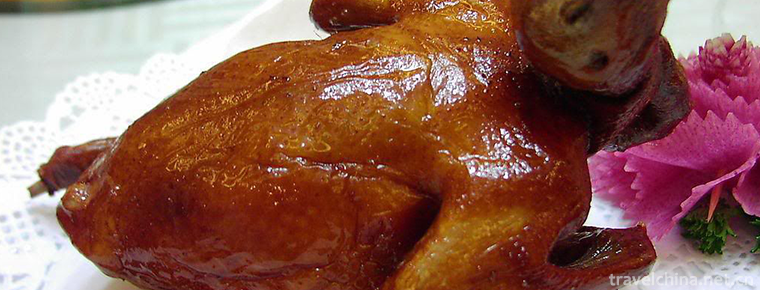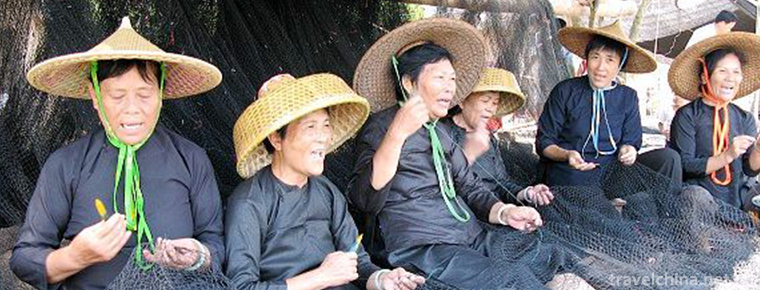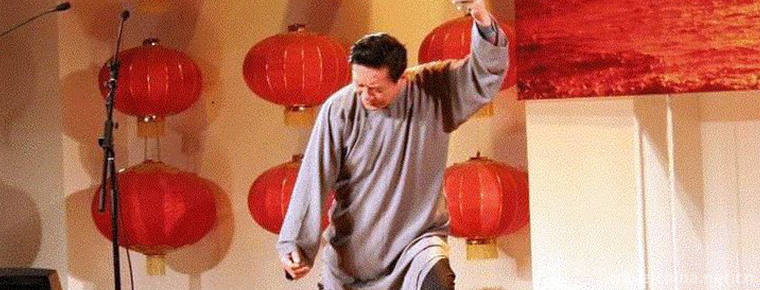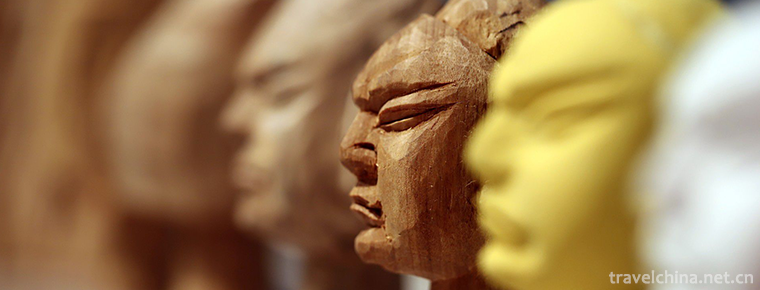Gulin lantern
Gulin lantern
Gulin lanterns, centered on Gulin, are widely distributed in the middle reaches of Chishui River at the junction of Sichuan, Guizhou and Yunnan provinces. It is a popular folk song and dance art of the Han nationality in Gulin County, Luzhou City, Sichuan Province. It has the performing style of "laughing, making noise, singing and dancing".
Legend has it that it originated in Tang and Song Dynasty and has a history of thousands of years. According to the Records of Gulin County, Gulin lanterns were popular among the people in the mid-Qing Dynasty, commonly known as twisting lanterns. Every year, from the 2nd to 18th of the first month of the first lunar month, the lanterns in the villages were "playing with lanterns, celebrating the New Year", talking and singing auspiciously, and wishing peace and security. After several generations of inheritance, it is deeply loved by the local people. Gulin County is also known as "the land of lanterns".
The content of Gulin Lantern Program includes "New Year's greetings", "praise diligence and laziness" and the dissemination of axioms and ethics, but the main content is the simple love between men and women in mountainous areas.
On November 11, 2014, Gulin lanterns were successfully declared as the fourth batch of national intangible cultural heritage.
Legends of origin
About the beginning of Gulin flower lantern, there is such a description in its lyrics: "From the Tang Dynasty, the lantern rose from the Tang Dynasty, the Tang Dynasty, and now, the Empress Empress suffered from eye disease, promised 36 lanterns, twelve heavenly into purple microstars, twelve Earthly into five-grain lanterns, twelve left in the folk as flower lanterns." "King Wu Xuan (brother of Song Renzong) made lanterns, robbed his wife Luo Huiying, and robbed his wife Miss Luo. Bao Ye raised his head to make an injustice, and Bao Ye raised his head to make an injustice, which has been handed down from ancient times to today." According to this inference, the ancient Linhua lantern originated from the Tang and Song Dynasties, and has a history of thousands of years.
According to Qing Guangxu's Thirty-three Years (1907) Records of "Renewal of Xuyong and Yongning Hall County Hezhi Folk Customs": "From the eighth day of the first lunar month, the streets set up lampshades under the lamp poles, the drums were bustling, tourists were like ants, twelve to fifteen nights, dragon lanterns, lion lanterns, lanterns, so-called Lantern Festival Lantern." It can be seen that the ancient Linhua lantern has a history of over a hundred years.
According to the Records of Gulin County, in the mid-Qing Dynasty, Gulin lanterns were popular among the people, commonly known as "twisting lanterns". Every year, from the 2nd to 18th of the first lunar month, the lanterns in the villages walked through the streets to "play with lanterns and celebrate the New Year". They talked and sang auspiciously, wished peace, thanked Heaven and earth, praised love and spread public morality.
According to Mou Daojing, the lamp head of Benkou Township, Dangui District, Gulin County, "The lantern of Mou Jia Lantern Ban was imparted by a folk artist named Ma Zengtang from Chishui County. Up to now, there have been five generations of people who can name and name." According to the word of mouth, Gulin lantern has a history of at least 100 years.
Inheritance and protection
In the 1980s, Gulin Flower Lantern was included in "The Integration of Chinese Ethnic and Folk Dances - Sichuan Volume".
The performances of Gulin lanterns have never been interrupted, and the main content of the lyrics is to reflect the production and life of the working people. After several generations of inheritance, folk art has continued through traditional festival activities and become a representative work of Lantern singing and dancing with local characteristics.
Since 1995, Gulin County has carried out many county-wide censuses on lanterns, sorted out the collected data, recorded and recorded the lanterns with modern scientific and technological means, and registered every lantern class and successors in the territory.
In 2005, Gulin County made a detailed study of the props, costumes, performance records, music and movements of the lanterns, compiled the excellent Han folk culture Gulin lanterns, recorded the special CD of Gulin lanterns, and introduced Gulin lanterns systematically.
From 2005 to 2007, Gulin lanterns were listed in the first batch of intangible cultural heritage lists in Gulin County, Luzhou City and Sichuan Province.
Since 2010, the finance of Gulin County has invested special funds every year for the inheritance, protection and propaganda of Gulin Flower Lamp, and provided financial support to the representative inheritors of Gulin Flower Lamp, and carried out regular inheritance activities.
In 2014, Gulin lanterns were successfully declared as the fourth batch of national intangible cultural heritage.
In the autumn of 2014, Gulin Flower Lantern formally launched the activities of Gulin Flower Lantern entering the campus in 6 pilot schools of Gulin Town, such as Xiao Xiao, Gulin Middle School, Yongle Middle School, Dazhai Middle School, Horseshoe Middle School and Horseshoe Primary School. And compiled and printed "Gulin Lantern Knowledge Reading Book" for primary and secondary school students, created a suitable practice of Lantern exercises for primary and secondary school students, the introduction of Gulin Lantern, history, legends, processes, roles, props, clothing, music, dance basic knowledge to each primary and secondary school students, to train a new type of Lantern successor.
External evaluation
"Gulin Lantern" is a popular folk dance and song art of the Han nationality in Gulin County. It has the performance style of "laughing, making noise, singing and dancing", and is deeply loved by the local people.
Gulin Flower Lantern is a unique folk dance in Sichuan Province. It is known as the "two-person dance" in the south.

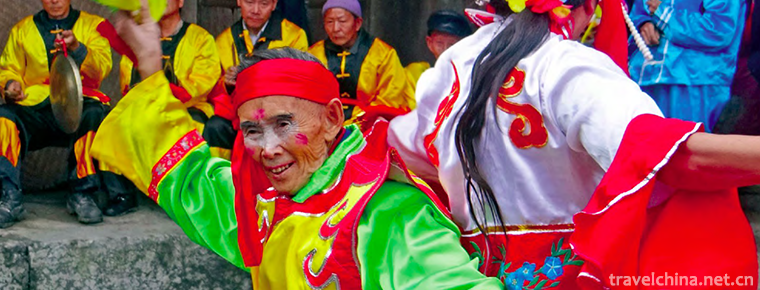
-
Kuan and Zhai Alley
No. 127, ChangShun Street, Qingyang, Chengdu, Sichuan, China.
Views: 227 Time 2018-09-29 -
Bosten Lake Scenic Area
Bosten Lake Scenic Spot is a national 5A scenic spot, covering an area of 988 square kilometers, is located in Xinjiang, China's scenic spots, Bosten Lake was known as the West Sea in ancient times,.
Views: 218 Time 2018-12-12 -
Central Radio and Television Tower
The Central Radio and Television Tower, now a national 4A scenic spot, is located on the west side of West Third Ring Road, Haidian District, Beijing. Near the Space Bridge, it faces beautiful Yuyuant.
Views: 141 Time 2018-12-22 -
Xingwen sea
Xingwenshihai is located in Xingwen County, Yibin City, Sichuan Province. It is located in the transition zone between Sichuan Basin and Yunnan-Guizhou Plateau. Its total area is about 156 square kilo.
Views: 234 Time 2018-12-24 -
Liaoheyuan National Forest Park
Liaoheyuan National Forest Park is located in Dawopu Forest Farm, Pingquan County, Hebei Province. It is named for its birthplace of Liaohe River in China..
Views: 146 Time 2019-01-30 -
Eight treasures quail
Babao quail is a dish. Its main ingredient is pure quail, etc. Its ingredients are purple quail, lotus seed, etc. Its seasoning is peanut oil, salt, soy sauce and so on. It is made by deep-frying..
Views: 255 Time 2019-03-25 -
Traditional Toys Tancheng Wooden Rotary Toys
Tancheng Wooden Rotary Toy is an ancient traditional handicraft. Originated in Fanyuan Village, north of Gangshang Town, Tancheng County, Linyi City, Shandong Province, it is commonly known as "p.
Views: 166 Time 2019-04-21 -
Lingao Fishing Song
Lingao Fishing Song is a kind of Han folk song which is popular among fishermen in Lingao County, Hainan Province. Because of its use of the lining "Li Li Mei" and related legends, it is als.
Views: 268 Time 2019-05-13 -
Shandong Express Book
Shandong Quick Book, originating from Shandong Province's local traditional folk art form, has a history of more than 100 years. It was first popular in Shandong, North China and Northeast China, and .
Views: 168 Time 2019-06-13 -
Zhangzhou Puppet Head Sculpture
Zhangzhou puppet head carving is a traditional folk arts and crafts in Zhangzhou City, Fujian Province. It belongs to a special skill in the production of puppet stage props. Zhangzhou puppet head car.
Views: 124 Time 2019-07-25 -
Daci Temple
Daci Temple, also known as the ancient great saint CI temple, is located in the first section of Dongfeng Road, Jinjiang District, Chengdu City, Sichuan Province. It was built between the 3rd and 4th centuries AD, and is known as "the first jungle of the Sinian"..
Views: 99 Time 2020-11-05
